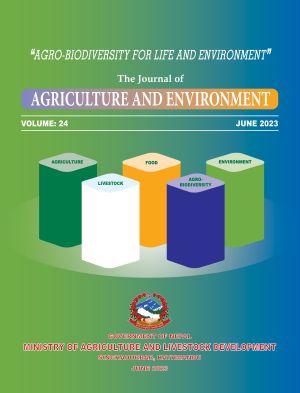Screenhouse Evaluation of the Fungicides and Bio-Control Agents for the Management of Fusarium Wilt (Foc Race 1) of Banana in Nepal
DOI:
https://doi.org/10.3126/aej.v24i01.58195Keywords:
Banana, biocontrol agents, efficacy, fungicides, fusarium oxysporum f.sp. cubenseAbstract
Banana is affected by a wide number of diseases, of which, Fusarium wilt caused by Fusarium oxysporum f.sp. cubense has played a major role in devastating Malbhog (Silk) banana plantations in Nepal. The objective of this study was to evaluate the commonly available fungicides (Carbendazim 50%, Fenamidone 10%+ Mancozeb 50%, Chlorothalonil and biocontrol agents (Trichoderma sps., Bacillus thuringiensis and Pseudomonas species) for their efficacy against Foc. The effectiveness of fungicides and biocontrol agents to Foc was examined in screenhouse. The experiment was laid out in a completely randomized design with three replications and eight treatments. Among the chemicals, the most effective fungicide to reduce Fusarium wilt severity (root disease) was Bavistin with an efficacy of 55.33% followed by Sectin 46.33% and Chlorothalonil 35%. Similarly, maximum efficacy over control was recorded in Trichoderma harzianum with 41% and lowest was 32% in Pseudomonas sp. In the case of leaf disease, the lowest severity was 21.33% recorded in Bavistin and highest was 40.33% in Chlorothalonil. Similarly, among biocontrol agents, the lowest severity was found in Bacillus thuringiensis whereas highest was found in Trichoderma viride. A Suppression of disease by biocontrol agents might be due to their fungicidal activity, which means they produce a variety of antifungal compounds. These compounds induce plant defense mechanisms. Further field evaluations of the fungicides and biocontrol agents are required to determine if the effect observed in the screenhouse can be integrated into field management of Fusarium wilt.




